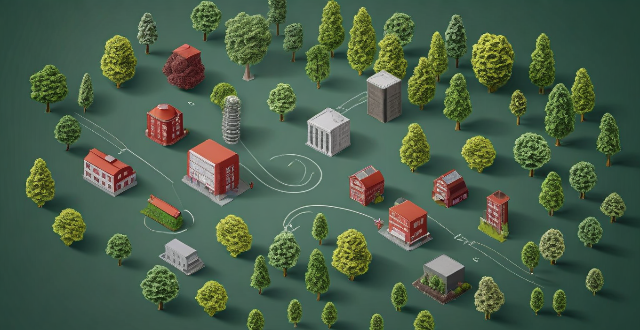Climate Solution

Is geoengineering a viable solution to global warming ?
Geoengineering, also known as climate engineering or earth system management, refers to the intentional manipulation of the global climate on a large scale to counteract the effects of global warming and reduce the risks associated with climate change. While geoengineering has potential benefits such as mitigating climate change, providing faster responses compared to conventional methods, and being relatively inexpensive, it also comes with uncertainties regarding long-term effects, lack of international regulation and governance, and limited scope compared to other mitigation strategies. Therefore, geoengineering should not be seen as a substitute for conventional mitigation strategies but rather complement them. Extensive research and international cooperation are essential before implementing any large-scale geoengineering projects to ensure their safety and effectiveness in addressing climate change challenges.

Is carbon sequestration a viable solution to combat climate change ?
Carbon sequestration can help reduce atmospheric CO2 levels and support renewable energy sources, but it faces technical feasibility, economic costs, storage capacity, and potential risks. It should be part of a comprehensive strategy to combat climate change.

Can climate data analysis provide solutions to climate change problems ?
Climate data analysis is crucial for understanding climate change, predicting future scenarios, and developing solutions to mitigate its impact. It helps identify trends in temperature, precipitation, and other variables, predict changes in sea levels, extreme weather events, and ecosystem shifts. Solutions derived from this analysis include transitioning to renewable energy, improving energy efficiency, promoting sustainable forestry and agriculture, and international cooperation on climate action.

What innovations in technology are helping to combat the climate emergency ?
Innovations in technology are helping to combat the climate emergency by developing solutions that mitigate its effects and contribute to a sustainable future. These include renewable energy sources, energy efficiency improvements, carbon capture and storage, green infrastructure, and circular economy principles. By embracing these innovations and continuing to develop new solutions, we can work together to address the challenges posed by climate change and create a healthier planet for future generations.

Can you provide examples of climate justice in action ?
Climate justice is a concept that recognizes the disproportionate impacts of climate change on vulnerable populations and communities. It emphasizes the need for equitable solutions that address both the causes and consequences of climate change, ensuring that those most affected by environmental harm have a voice in decision-making processes. Examples of climate justice in action include renewable energy adoption, green infrastructure and natural solutions, climate education and awareness, and climate policy and advocacy. These initiatives aim to mitigate the effects of climate change while building a more equitable society that can thrive amidst changing environmental conditions.

What are some potential solutions to combat climate change ?
Potential Solutions to Combat Climate Change

Can climate-smart technology be used to mitigate the effects of climate change ?
Climate-smart technologies aim to reduce greenhouse gas emissions and enhance resilience to climate change impacts. Renewable energy sources, energy efficiency improvements, and nature-based solutions are key examples. These technologies offer promising solutions but face challenges related to cost, policy, and potential unintended consequences.

Is geothermal energy a practical solution for colder climates ?
Geothermal energy is a renewable source of energy that comes from the heat generated by the Earth's core. It has been used for centuries in various forms, such as hot springs and geysers. In recent years, there has been an increasing interest in using geothermal energy as an alternative to fossil fuels. But is it a practical solution for colder climates? Let's explore this question further. Advantages of Geothermal Energy in Colder Climates: 1. Reliable Source of Energy: Unlike other renewable sources like solar or wind power, which are dependent on weather conditions, geothermal energy can be harnessed all year round, regardless of the temperature outside. This makes it an ideal source of energy for colder climates where there may be long periods of ice and snow. 2. Low Emissions: Compared to fossil fuels, geothermal power plants produce significantly fewer greenhouse gases and air pollutants. This makes it an environmentally friendly option for communities looking to reduce their carbon footprint. 3. Cost-Effectiveness: While the initial cost of setting up a geothermal power plant can be high, the long-term costs are relatively low compared to other sources of energy. Once established, geothermal power plants require little maintenance and have a lifespan of several decades. This makes it a cost-effective solution for colder climates where energy demands are high due to heating needs. Challenges of Geothermal Energy in Colder Climates: 1. Limited Availability: One of the main challenges of using geothermal energy in colder climates is its limited availability. Not all areas have access to geothermal resources, and even those that do may not have enough heat to generate significant amounts of energy. This means that while geothermal energy can be a practical solution for some areas, it may not be feasible for others. 2. High Initial Costs: As mentioned earlier, the initial cost of setting up a geothermal power plant can be high. This can be a barrier for communities with limited financial resources or those without access to government subsidies or grants. Additionally, drilling equipment and expertise may need to be imported from other countries, adding to the overall cost. 3. Environmental Impact: While geothermal energy is generally considered to be environmentally friendly, there are still some potential impacts associated with its use. For example, drilling activities can disturb wildlife habitats and disrupt local ecosystems. Additionally, if not managed properly, geothermal power plants can release harmful chemicals into the atmosphere or nearby water sources. Conclusion: In conclusion, geothermal energy can be a practical solution for colder climates under certain conditions. Its reliability, low emissions, and cost-effectiveness make it an attractive option for communities looking to reduce their reliance on fossil fuels. However, its limited availability, high initial costs, and potential environmental impacts must also be considered before making any decisions about implementing geothermal energy projects in colder climates.

What are the ethical implications of climate conflicts ?
The ethical implications of climate conflicts, which ariseThe ethical implications of climate conflicts, which arise climate change issues like resource scar which arise from disputes related to climate change issues like resource scarcity and displacement, involve complex moral dilemmas. These conflicts require careful consideration of rights, responsibilities, justice, sustainability, and stewardship. Key ethical principles include balancing individual rights with environmental responsibilities, ensuring justice and fairness in solutions, and promoting sustainability for future generations. Ethical dilemmas such as intergenerational equity, compensation and redress for victims, and balancing mitigation and adaptation strategies must also be addressed. Open dialogue and collaborative problem-solving are essential for finding solutions that promote a more equitable and sustainable future.

How effective is geoengineering in combating climate change ?
Geoengineering, the large-scale manipulation of the environment to combat climate change, has potential benefits and risks. It includes methods like Solar Radiation Management (SRM) and Carbon Dioxide Removal (CDR), which could theoretically offset global warming and lower atmospheric CO2 levels, respectively. However, geoengineering is not a solution to the root cause of climate change, carries uncertain side effects, and raises equity and ethical concerns. Its effectiveness is also yet to be proven at a relevant scale. Therefore, while research into geoengineering should continue with caution, it should not replace the urgent need for global greenhouse gas emission reduction and adaptation strategies.

What are the challenges faced in climate data analysis and how can they be overcome ?
## Topic Summary The article discusses the challenges faced in climate data analysis and proposes solutions to overcome these obstacles. The primary challenges include lack of accessible and reliable data, inconsistent methodologies, limited computational capabilities, and biased or incomplete models. To address these issues, the article suggests collaboration and data sharing among researchers and organizations, standardized methods and guidelines for analysis, cloud computing and remote access for computational needs, and continuous improvement and validation of climate models. By implementing these solutions, researchers can enhance the accuracy and reliability of their climate data analysis, leading to more accurate predictions and effective strategies for mitigating climate change.

What is the importance of including climate change in school curriculums ?
Including climate change in school curriculums is crucial for raising awareness, promoting action and advocacy, and preparing students for a sustainable future. By educating students about the causes and effects of climate change, as well as potential solutions, they gain knowledge, critical thinking skills, and a global perspective. This can motivate them to take action, become advocates for climate action, and pursue careers related to climate change. Including climate change in the curriculum also has the potential to create a generational shift in attitudes towards the environment, foster innovation and creativity in finding solutions, and develop future leaders who prioritize environmental issues.

Is carbon capture technology a viable solution for industries with high carbon emissions ?
Carbon capture technology (CCT) is a process that captures carbon dioxide (CO2) emissions from burning fossil fuels and stores it to prevent its release into the atmosphere. This technology has been proposed as a solution to reduce greenhouse gas emissions from industries with high carbon footprints. However, there are both advantages and challenges associated with CCT. The primary advantage of CCT is its potential to significantly reduce greenhouse gas emissions from power plants and other industrial processes by capturing up to 90% of CO2 emissions. It also allows the continued use of fossil fuels while reducing their environmental impact, which is particularly important for countries heavily reliant on coal or natural gas for their energy needs. Additionally, the development and implementation of CCT could create new job opportunities in research, engineering, construction, and operation of these facilities. However, one of the biggest challenges facing CCT is its high cost. The installation and operation of carbon capture systems can be expensive, making it difficult for many companies to invest in this technology. Carbon capture processes also require energy, often from burning more fossil fuels, which can lead to a net increase in CO2 emissions unless the energy source is renewable. Once captured, CO2 needs to be transported and stored safely, requiring infrastructure that does not currently exist in many regions and raising concerns about leakage and long-term storage solutions. In conclusion, while carbon capture technology offers promising benefits for reducing greenhouse gas emissions from industries with high carbon footprints, it also presents significant challenges that need to be addressed before it becomes a widely adopted solution. Cost-effectiveness, energy requirements, and storage infrastructure are key areas that require further development and investment to make CCT a viable option for combating climate change.

What are the potential solutions for climate change in agriculture ?
This article explores potential solutions for climate change in agriculture, including sustainable farming practices, water management, crop diversification and rotation, livestock management, energy efficiency and renewable energy, carbon offsetting and sequestration, research and development, and policy interventions. These solutions aim to mitigate the impacts of climate change on crop yields, water availability, and biodiversity, and help build a more resilient and sustainable agricultural sector capable of adapting to changing climate conditions.

What are the potential drawbacks or challenges associated with climate action initiatives ?
Climate action initiatives are essential for mitigating the impacts of climate change, but they come with potential drawbacks and challenges. These can range from economic to social and political implications. Economic implications include job displacement in traditional fossil fuel industries, the cost of implementing renewable energy infrastructure, and economic inequality. Social and cultural implications involve changes in lifestyle and consumption patterns, as well as equity in access to clean energy solutions. Political and policy challenges include legislative hurdles, international cooperation, public perception, and misinformation. Environmental trade-offs involve impact on other ecosystems and sustainability of solutions. Addressing these challenges through comprehensive planning, stakeholder engagement, and continuous improvement is crucial for a just and effective transition to a low-carbon future.

What are some tips for labeling and keeping track of different homemade cleaning solutions ?
Label and keep track of homemade cleaning solutions with clear labels, appropriate containers, color coding, and a list. Store them out of reach of children and pets, and date the solutions for replacement tracking.

How do I resolve conflicts within a study group ?
Resolving Conflicts within a Study Group: Identify the source of conflict, communicate openly and honestly, find common ground, brainstorm solutions, choose and implement a solution, evaluate and adjust, and maintain a positive atmosphere.

Are there any natural or eco-friendly disinfection solutions that are effective against viruses ?
The article discusses natural and eco-friendly disinfection solutions that are effective against viruses. It mentions four options: lemon juice and salt, white vinegar, tea tree oil, and hydrogen peroxide. Each option has a procedure for use and is effective in killing germs on surfaces. The article concludes that while these solutions may require more time and effort compared to chemical disinfectants, they offer a safer alternative for those concerned about environmental impact and health risks associated with harsh chemicals.

Is carbon capture a viable solution for all industries and sectors ?
Carbon capture technology, while offering significant potential to reduce industrial carbon emissions, faces challenges in universal adoption due to high costs and energy penalties. Its applicability varies across sectors like power generation, manufacturing, and transportation. Economic considerations include hefty investments and potential job creation, while environmental benefits encompass direct emission reduction and support for a circular economy. The viability of carbon capture depends on industry-specific factors, economic conditions, and technological progress.

Can national governments alone tackle the issue of climate change, or is international cooperation necessary for effective global climate governance ?
Climate change is a complex issue that requires global cooperation to effectively tackle. While national governments can implement policies and invest in research within their borders, the interconnectedness of climate change factors necessitates international collaboration. Global agreements, technology transfer, and financial support are crucial components of this cooperation. Ultimately, a combination of national efforts and international partnerships is needed for effective climate governance.

What is carbon capture technology and how does it work ?
Carbon capture technology is a set of methods aimed at reducing CO2 emissions from power plants, industrial processes, and other sources. The main types are post-combustion capture, oxy-fuel combustion, and pre-combustion capture, each with its specific techniques and challenges. While these technologies offer significant potential in the fight against climate change, they face economic and logistical barriers such as high costs and the need for safe storage solutions. Ongoing research seeks to improve efficiency and reduce costs, making carbon capture an increasingly viable solution in achieving net-zero emissions targets.

Can I substitute coconut oil for other oils when making my own cleaning solutions ?
Coconut oil can be substituted for other oils in homemade cleaning solutions due to its antibacterial properties, natural scent, and safety. It can be used in all-purpose cleaners, furniture polish, and glass cleaners. However, it is solid at room temperature and may make the solution thicker. Additionally, it has a long shelf life but can go rancid if exposed to heat or light for extended periods.

How can I create an effective window cleaner without using alcohol or ammonia ?
In this guide, we discussed the steps to create a homemade window cleaner that is safe, non-toxic, and environmentally friendly without using alcohol or ammonia. The ingredients needed for this solution are white vinegar, distilled water, lemon juice, liquid soap (preferably natural and biodegradable), and a spray bottle. To make the solution, mix 1 cup of distilled water, 1/4 cup of white vinegar, 1 tablespoon of lemon juice, and 1/2 teaspoon of liquid soap in a spray bottle. Shake the bottle well to ensure that all the ingredients are mixed thoroughly. Test the solution on a small area first before using it on all your windows. Apply the solution onto the window surface and wipe it off with a clean, lint-free cloth or paper towel. Use a circular motion to avoid leaving streaks. Dry the windows completely with a dry cloth or paper towel. Some tips to keep in mind while using this solution are to use a microfiber cloth for best results, avoid cleaning windows in direct sunlight, use a soft-bristled brush for stubborn stains, and store the solution in a cool, dark place to prolong its shelf life. By following these simple steps, you can enjoy clean and streak-free windows while also being environmentally conscious.

What are the common mistakes people make when trying to achieve financial freedom ?
Achieving financial freedom is a goal for many, but it's not always easy. Along the way, people often make mistakes that can hinder their progress. Here are some of the most common errors: ## 1\. Not Having a Clear Plan One of the biggest mistakes people make is not having a clear plan for achieving financial freedom. Without a roadmap, it's easy to get sidetracked or lose motivation. * **Solution**: Create a detailed plan that outlines your goals, timeline, and strategies for achieving them. ## 2\. Spending Beyond Their Means Many people fall into the trap of spending more than they earn, which leads to debt and financial stress. * **Solution**: Live below your means by budgeting, tracking expenses, and cutting unnecessary costs. ## 3\. Not Investing in Their Future Failing to invest in long-term goals like retirement or building wealth can set people back years or even decades. * **Solution**: Start investing early and regularly, even if it's just a small amount each month. ## 4\. Ignoring Debt Repayment Carrying high-interest debt can be a major obstacle to achieving financial freedom. * **Solution**: Prioritize paying off high-interest debt as soon as possible. ## 5\. Lacking Diversification in Investments Putting all your eggs in one basket can be risky. Many people make the mistake of not diversifying their investments. * **Solution**: Spread your investments across different asset classes to reduce risk. ## 6\. Not Educating Themselves About Finance A lack of financial knowledge can lead to poor decision-making and missed opportunities. * **Solution**: Educate yourself about personal finance through books, courses, and other resources. ## 7\. Failing to Review and Adjust Financial Plans Life changes, and so should your financial plans. Many people forget to review and adjust their strategies over time. * **Solution**: Regularly review your financial situation and adjust your plans accordingly.

What are the challenges faced by climate financing initiatives ?
该文本讨论了气候融资计划面临的主要挑战和可能的解决方案,包括缺乏政治意愿、融资渠道有限、项目设计和实施能力不足以及治理和问责机制薄弱。文章强调通过加强合作、多元化资金来源、提升能力建设和完善治理框架来克服这些障碍,以实现更可持续的未来。

What are some common challenges faced by sports leaders and how can they be overcome ?
Sports leaders face a myriad of challenges that test their ability to manage teams effectively. These include maintaining team morale, dealing with performance pressure, handling injuries, balancing development and winning, navigating media scrutiny, managing finances, adapting to change, and upholding ethical standards. Strategies like fostering team cohesion, implementing mental skills training, having injury management plans, long-term planning, media training, financial diversification, staying informed, and promoting transparency can help overcome these challenges.